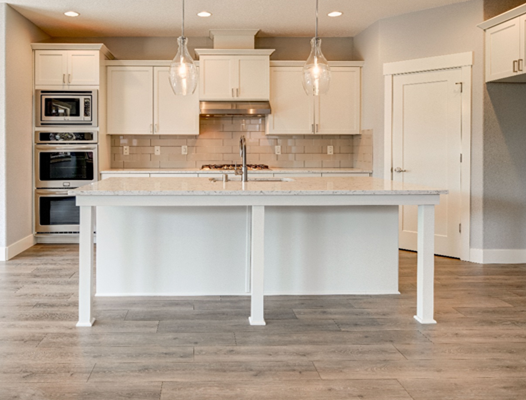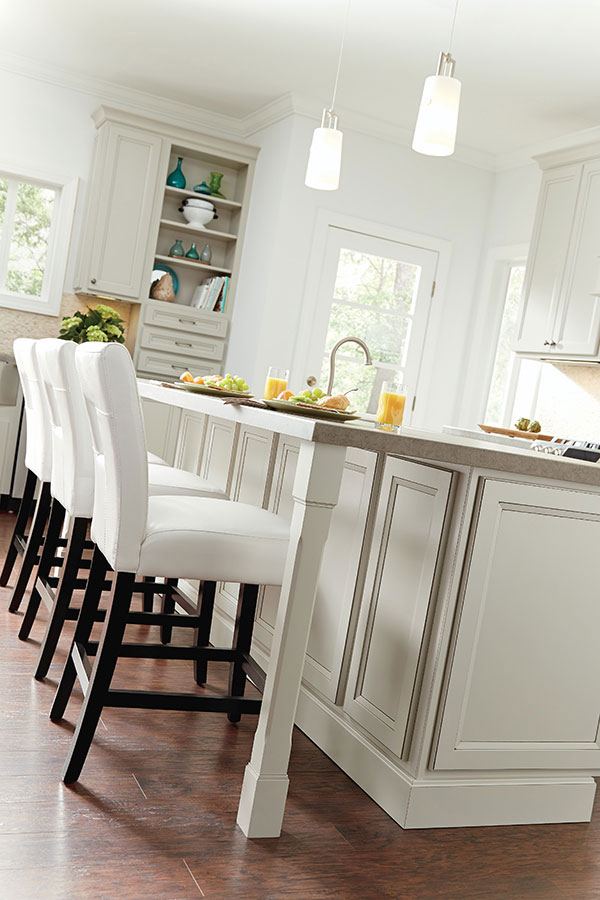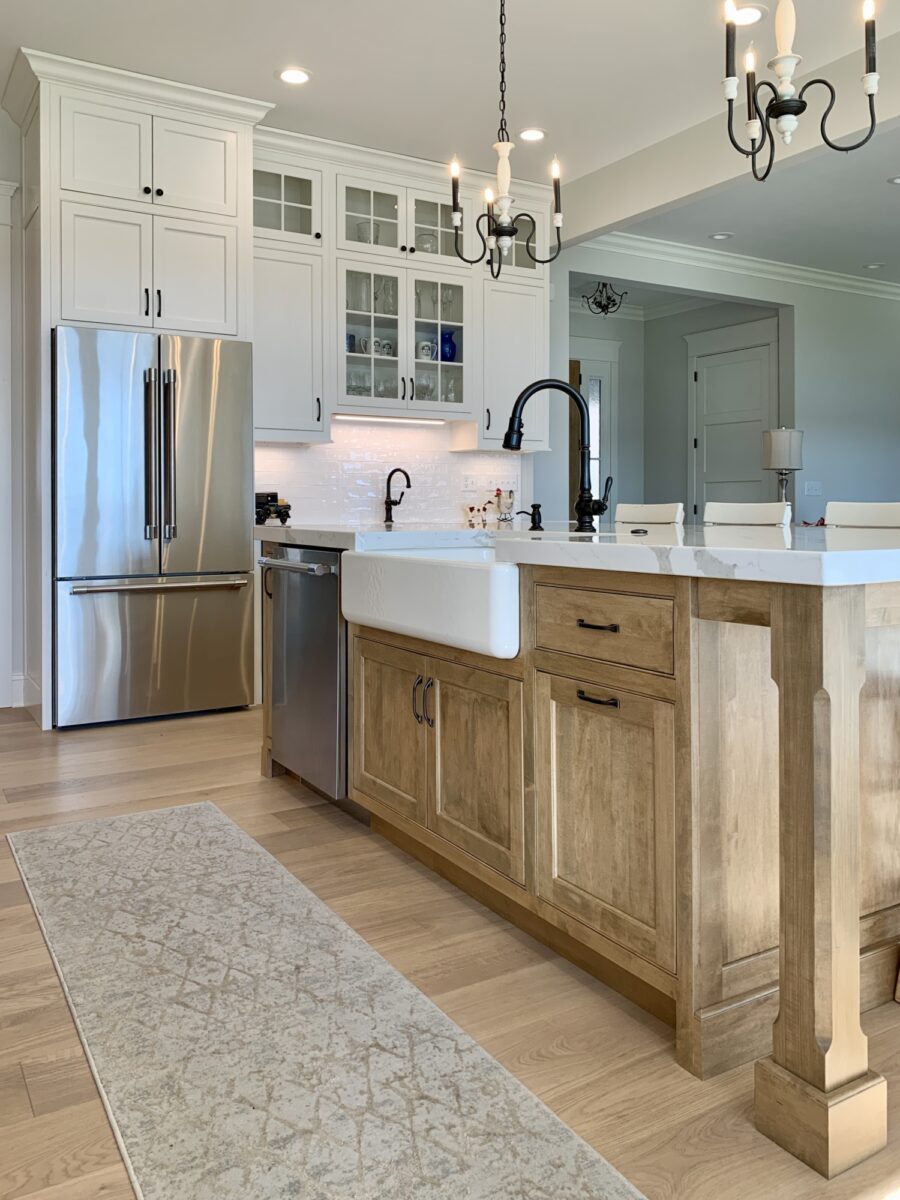One-of-a-kind Kitchen Island Legs for a Personalized Kitchen Look
One-of-a-kind Kitchen Island Legs for a Personalized Kitchen Look
Blog Article
A Guide to Picking the Ideal Kitchen Island for Your Home
Selecting the ideal kitchen island is a multi-faceted decision that can dramatically impact both the performance and looks of your home. Comprehending your kitchen area's spatial characteristics is the first step, making sure that the island fits seamlessly without interrupting the circulation. Beyond area factors to consider, determining the main function of the island-- be it for dish preparation, eating, or additional storage-- is crucial. The option of materials and coatings also plays an essential function in balancing the island with your kitchen area's total layout. As we discover these elements further, the nuances of each decision will become clear.
Assessing Your Area
Prior to choosing a kitchen area island, it is crucial to completely analyze your space to ensure the addition will certainly be both practical and aesthetically pleasing. Begin by measuring the available area, including the size, size, and height of the kitchen. Precise measurements are critical to avoid buying an island that bewilders the area or one that is overmuch little.
Consider the existing format and how the island will certainly incorporate with the existing web traffic flow. A well-placed island ought to not hamper or block pathways accessibility to important devices, such as the stove, fridge, and sink. Leave adequate clearance space-- usually around 36 to 48 inches on all sides-- to permit for comfortable motion and workspace performance.
Next, review the all-natural light and sightlines within your kitchen area. An island that obstructs a window or interferes with aesthetic communication can make the room feel confined and dark. Consider just how the island's positioning will certainly impact lights and presence, guaranteeing it improves instead than diminishes the kitchen area's atmosphere.
Establishing the Objective
Identifying the purpose of your kitchen area island is a critical step in ensuring it meets your particular needs and preferences. Prior to delving into style or size factors to consider, it is necessary to clarify what primary feature the island will offer in your cooking area. Will it be a central hub for meal prep work, an informal eating location, or perhaps an extra storage option?
Furthermore, adequate counter room for cutting and blending, along with obtainable storage for kitchen area tools and ingredients, can transform the island right into an efficient workstation. Alternatively, if the island is planned to serve or assist in social communications as an eating area, seating plans become paramount.

Choosing the Right Dimension
Picking the right size for your kitchen island is an equilibrium of capability and room optimization. An excellent cooking area island need to give adequate office while ensuring that activity around the cooking area stays unobstructed. Begin by gauging your kitchen area room; a minimum clearance of 36 to 42 inches around the island is needed to enable for comfortable movement and accessibility.
The measurements of the island should show its intended use. If the island will certainly serve mainly as a prep location, a size of 24 to 36 inches may be adequate.

Finally, make sure that the island's size enhances the overall cooking area design, staying clear of any kind of frustrating visibility that might diminish the cooking area's aesthetic and utility - kitchen island legs. Cautious preparation and accurate measurements will certainly assist you accomplish a effective and harmonious cooking area atmosphere
Choosing Products and Finishes
After figuring out the suitable size for your cooking area island, the next action involves picking appropriate materials and surfaces. The selection of products substantially affects both the visual appeal and performance of your kitchen area island. Popular materials for kitchen counters include butcher, quartz, and granite block, each offering unique advantages. Granite, understood for navigate to this site its resilience and ageless sophistication, is highly resistant to scrapes and warm. Quartz, a crafted rock, supplies a non-porous surface that withstands germs and stains. Butcher block, made from wood, includes a cozy, rustic charm and is optimal for food preparation.
In addition to the kitchen counter, think about the materials for the space station. Solid wood offers a classic, durable look, while stainless steel offers a smooth, contemporary appearance and is very easy to clean. Repainted coatings can present a dash of color, with options ranging from low-key pastels to vibrant, lively hues.
Pay interest to the longevity of finishes, especially in high-traffic areas, to keep the island's look over time. Choosing the best materials and finishes will certainly boost both the performance and visual appeal of your cooking area island.
Integrating Useful Attributes
Including functional features right into your kitchen island can considerably boost its energy and comfort, transforming it into a flexible centerpiece of your cooking area. One crucial attribute to take into consideration is added storage. Incorporating cabinets, cabinets, and open shelving can supply much-needed room for kitchenware, tools, and little appliances, assisting to maintain a clutter-free setting.
An additional valuable addition is an integrated sink or cooktop, which can simplify dish prep work and clean-up processes. A sink can facilitate tasks such as cleaning veggies and cleansing recipes, while a cooktop can permit food preparation straight on the island, promoting an extra interactive and social food preparation experience.
Consider including seating alternatives, particularly if your cooking area doubles as a casual eating area. Bar feceses or integrated benches can change the island right into a multifunctional area for dishes, homework, or casual events.
Lastly, incorporating electric outlets right into your cooking area island can boost its functionality. Electrical outlets provide practical accessibility for little cooking area appliances, billing terminals for electronic devices, and extra illumination alternatives.
Final Thought

Before selecting a cooking area island, it is important to extensively assess your space to ensure the enhancement will be both practical and cosmetically pleasing.Picking the best size for your cooking area island is an equilibrium of capability and room optimization. kitchen island legs. A suitable kitchen island must offer enough office while making certain that motion around the cooking area continues to be unimpeded.Including functional functions right into your kitchen island can substantially boost its utility and comfort, transforming it right into a functional focal point of your kitchen area.In final thought, picking the suitable kitchen island necessitates a thorough assessment of the available area, quality regarding its primary function, and cautious factor to consider of the proper dimension and materials
Report this page